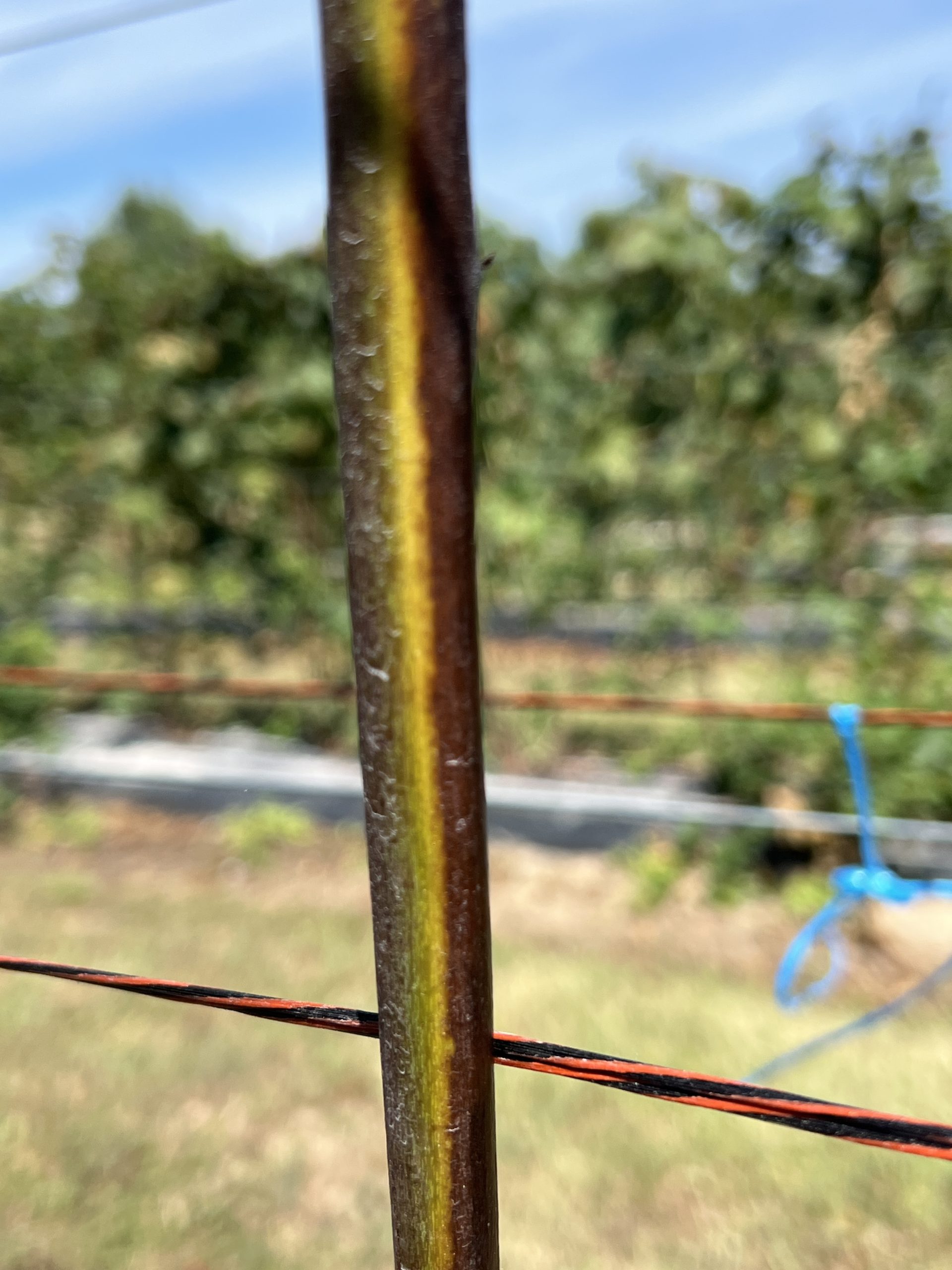Fusarium wilt confirmed in commercial Arkansas blackberries, growers should be on the lookout

Fusarium wilt, a soil-dwelling fungal disease known to wipe out susceptible crops in affected areas, has been confirmed for the first time on a commercial blackberry operation in Arkansas.
Blackberries are a multi-million-dollar market in the United States. According to the Agricultural Marketing Resource Center, U.S. blackberry production was valued at $31.1 million in 2017.
Most Arkansas producers are familiar with Fusarium wilt in watermelons, tomatoes and other fruit and vegetable crops. Until recently, Fusarium wilt had only been confirmed in commercial blackberry varieties in California, North Carolina and Mexico. But where these new cases of Fusarium wilt in Arkansas originated isn’t known.
“It’s unclear whether these new cases are due to new, more susceptible cultivars being infected by a pathogen that was already present, or introduction of the pathogen somewhere in the plant supply chain,” said Aaron Cato, extension horticulture integrated pest management specialist for the University of Arkansas System Division of Agriculture. “What we do know is that there is likely a large amount of variation in susceptibility to this disease by cultivar.”
Cato said the cultivar “Twilight” is known to be very susceptible and is where the disease was first observed in many areas including Arkansas. Fusarium wilt has also been observed on other commonly grown varieties such as ‘Ouachita’ while cultivars such as ‘Navaho’ appear to be resistant to some degree.
Should Arkansas growers be worried?
Cato recommends that all Arkansas blackberry growers should scout their plants to catch a possible infection early to prevent spread.
“It’s hard to know exactly what we’re dealing with right now, but the short answer is that all growers should be on the lookout,” Cato said. “When plants get this disease they will die. There is an inherent risk to not finding this disease early, as farmers in North Carolina have documented the capacity of the disease to spread across a farm. What we know for sure is that we found it in the state and all growers need to be looking for it.”
What to look for
Although Fusarium wilt in blackberry is not very well understood yet, there are some key diagnostics that make it relatively easy to identify.
“Blackberry plants that have this disease will exhibit wilting accompanied by the appearance of longitudinal black streaks on canes, that will begin only on one side of the cane,” Cato said. “Black streaks will generally originate from the base of canes or near the ground and grow upward. These canes will wilt rapidly and leaves will die and often remain attached to the plant.”
Cato also said to watch for the presence of spores as masses present on the surface of the cane in whitish-pink or tan-colored streaks on necrotic areas.
What to do after finding Fusarium wilt
Because there is no remediation for soil near infected plants, it is important that growers avoid re-planting blackberries in affected areas. Additionally, Cato recommends removing plants and avoiding cross-contamination with other, nearby plantings.
“In fields where Fusarium shows up, it’s likely that you need to do more than just remove the infected plants,” Cato said. “The current assumption is that plants of a similar cultivar nearby are likely to be infected, but not all growers are going to be willing to get rid of these plants. For small-scale growers, it is likely worth the time to remove infected plants as soon as possible and try to be as sterile as possible when working from plant to plant.”
For larger growers, Cato said it may be best for growers to cut their losses and remove the entire field.
“We’re still waiting to see what the spread is like here in Arkansas, but growers in North Carolina have really preached isolation and cutting your losses on infected fields,” Cato said. “Ultimately, if you think you have found Fusarium wilt on your farm you need to contact your county agent and send in a sample to the Plant Health Clinic.”
Preventative measures
Although this disease is not well understood in blackberry yet, there are some best management practices to help avoid infection.
“First, growers should be sure to avoid introduction of the pathogen by only buying disease-free, tissue-cultured plants from reputable sources,” Cato said. “It’s a good idea to always rely on these reputable sources of plants to avoid the many diseases that could possibly be moved with blackberry plant material.”
Cato also recommends practicing good sanitation by removing nearby wild blackberries, avoiding handling plants when wet, clean any equipment used to work the soil or make beds prior to moving to new fields, and be sure to handle, prune or harvest fields that are not known to have issues before going into any infected or suspected Fusarium infected plantings.



